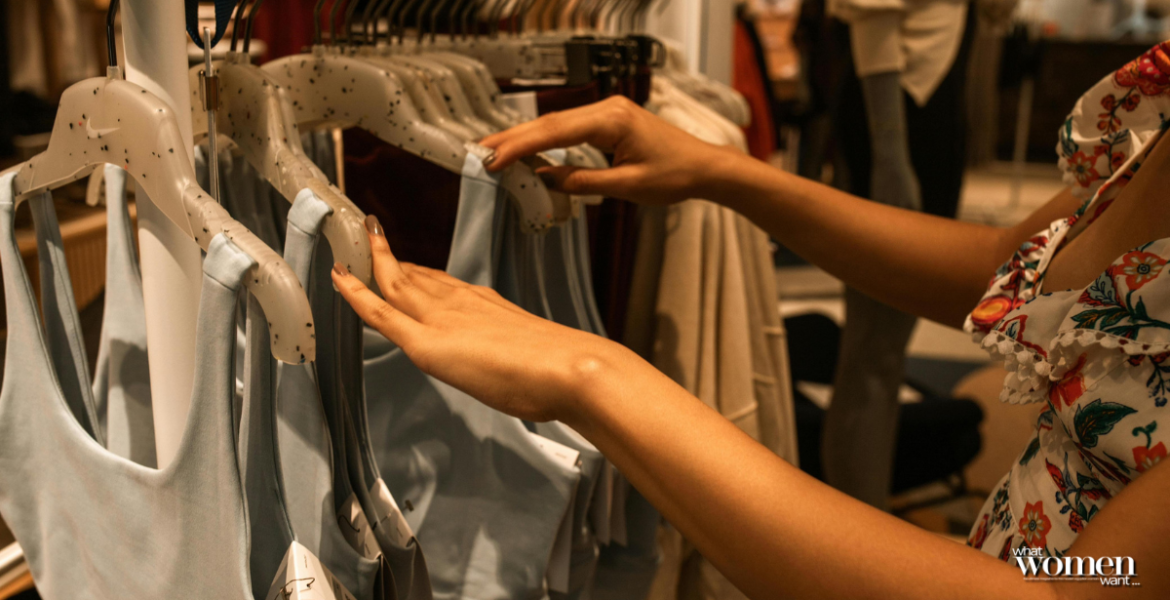The average Egyptian consumer experience has changed dramatically over the past decade. What began as a simple reaction to rising costs and economic challenges has now evolved into a broader transformation. Once, it was common for shoppers to afford international brands without much strain. A pair of pants or a dress from a global retail chain was seen as a regular purchase rather than a luxury. However, with rising prices tightening wallets, those days seem long gone. Today, buying from these brands requires planning and budgeting, as the cost of living has soared.
This change isn’t just about finding more affordable options—it’s about rethinking the way Egyptians engage with fashion, blending affordability with sustainability and cultural relevance. The question is no longer just what we wear, but how and why we shop.
Many people now find themselves priced out of international brands that were once easily attainable. This shift has forced consumers to reconsider their shopping habits and look for more affordable alternatives. People are no longer solely chasing logos or the latest fast fashion trends; they are turning to local brands and alternative shopping methods as a way to navigate the increasingly prohibitive costs of international clothing.
Local Brands – Step Forward:
In response to these challenges, local Egyptian brands have experienced a resurgence. Local designers, many of whom have embraced ethical production practices, have built a loyal following by offering stylish, culturally relevant, and comparatively affordable options. Many of these brands prioritise sustainability, reflecting a growing global concern for environmentally responsible fashion.
“By focusing on authentic designs and local craftsmanship, we promote a more sustainable approach that values quality over quantity.” The founder of SIGHT, Hussein Shahbender, shared with us. “Our commitment to sourcing materials responsibly aligns with a broader movement toward environmentally conscious fashion.”
The Thrifting Experience:
As an Egyptian consumer myself, one of the ways I’ve adapted to these changes is through thrift shopping, which has also gained immense popularity in recent years. Thrifting allows for a more affordable alternative without compromising on style or variety. Unlike traditional retail shopping, where items are mass-produced and predictable, thrifting brings a sense of discovery. The thrill of stumbling upon a rare gem—whether it’s a vintage piece or a unique designer find—makes the experience even more rewarding.
Thrift shopping has emerged as more than just a financial solution; it’s become a lifestyle choice for many. Beyond the affordability, thrifting encourages a more sustainable way of consuming fashion, reducing the environmental impact associated with fast fashion. For those concerned about their carbon footprint, second-hand shopping provides a guilt-free way to refresh one’s wardrobe.
Hana Shalaby, a serial thrifter, shared her love for thrifting with us. “I thrift because it’s easier to find authentic, good quality pieces and materials that end up staying in my closet for longer, not to mention that it’s a more economic choice and less harmful to the environment than fast fashion. Old clothes were just made better before automation and cheap synthetic fabrics were the norm.”
“Thrifting is a super engaging way of shopping because it’s always different every time I go, I end up finding things I have always wanted without having the same piece that everyone has, and that just makes my closet feel special and unique to my style.”
Some thrifters took an extra step and created online shops that resell their thrifting finds! Here are some of our favourites: thriftshark.eg, thriftinchic_, magdyycorner.
While thrifting is an appealing option for many, local brands serve as a convenient middle ground. Through user-friendly websites and social media platforms like Instagram, these brands have made shopping easier and more accessible. Their ability to connect with customers directly, especially through Instagram stores, has proven to be a game changer in Egypt’s retail landscape.
Why Choose Alternative Shopping?
Moreover, local brands have become synonymous with individuality and quality. Many shoppers find that supporting local designers not only feels good but also helps foster a sense of community and national pride. Egyptian designers are playing a critical role in the shift toward more sustainable, eco-conscious fashion by focusing on ethical production processes. From using locally sourced materials to minimising waste, these brands are delivering solutions that align with economic realities and evolving cultural values.
It’s clear that Egyptian consumers are no longer simply looking for the latest trends—they are seeking brands that resonate with their values, both economically and socially. This shift toward supporting local businesses and adopting more sustainable practices reflects a broader global movement toward conscious consumption.
We’re becoming more conscious of the choices we make, not just financially, but ethically too. Supporting local designers feels like an investment in our own culture and economy, while thrifting adds an element of creativity to our wardrobes. The excitement of finding unique pieces, whether through second-hand shopping or from local brands, is far more rewarding than mindlessly following global trends. I believe this transformation will lead to a more sustainable and culturally connected fashion landscape in Egypt, one that could even inspire other regions facing similar challenges.

